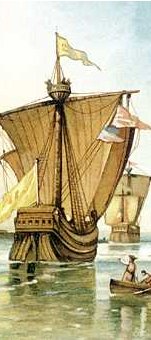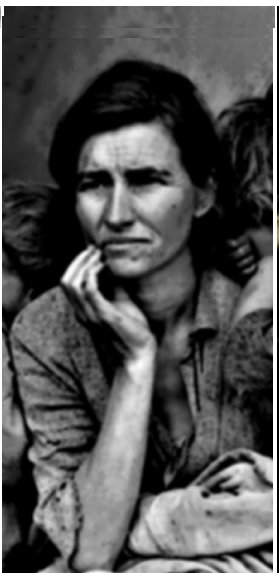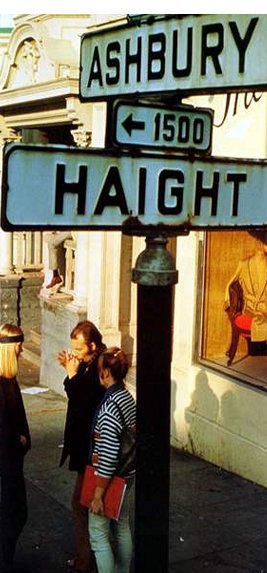Brea, California
the Legacy Vincent Chen
Esther Cramer became
a historian after her home was destroyed by fire in 1959. Her accomplishments
include community leader, author, supermarket executive, and local historian.
In addition to her qualifications, she is also a La Habra resident, familiar with most of the
residents in Brea. Her first published book, La Habra, the Pass through the
Hills, won awards from the University of California Irvine in 1970.
On January 19,
1981,
the Brea Community History Project was founded to preserve the history of Brea. Their historical
compilations were combined to create Esther Ridgeway Cramer¡¦s book, Brea: The City of Oil, Oranges and Opportunity. Cramer sets out to illustrate the history of Brea from its first conception
as a wayward Mexican territory to the present day industrialized American city
with its uniquely ¡§strong community identity.¡¨1
For the first three chapters of the book, Cramer moves
from describing the fertile landscape of La Habra Valley¡Xuntouched by man¡Xto the
arrival of its first settlers: Mexican-Spanish travelers. Cramer details the
establishment of surrounding missions in the area. For example, the first
official historical recordings of Brea were diaries kept by
Franciscan missionaries. Mission San Gabriel Arcangel ¡V the mission
located closest to present-day Brea - was founded on Sept. 8, 1771 for the purpose of
converting the surrounding Indians to Christianity. Unfortunately by the end of
the 18th century, most Indians were ¡§missionized, dead, or [had]
fled to other areas.¡¨2 Cramer alludes to American explorers of the
1820s through singular individuals like Jedediah Smith and James Ohio Pattie,
although America was not interested in California at the time. The second
chapter discusses Mexican land grants¡Xespecially the Ontiveros Grant¡Xand
documents the life of its namesake, Juan Pacifico Ontiveros. The Ontiveros
Grant of 1837 granted Juan Pacifico Ontiveros present-day Brea, Anaheim, Fullerton, and Placentia. By 1840, American
influence was growing rapidly due to the interest of merchant vessel fleets
from New
England in the hide-and-tallow trade. President James Polk tried unsuccessfully
to buy California from Mexico. Little known to most
Americans, Commodore John Sloat sailed into Monterey Bay and took possession of Monterey on July 7, 1846, proclaiming California a part of the United States. After the Mexican-American
War ended in 1848, The Treaty of Guadalupe officially marked California¡¦s passing from Mexican to
American hands.
Chapter three discusses the transformation from
ranchos to real estate with end of the Bastanchury Ranch, the American breakup
of ranchos, and the decline of the sheep ranching trade. In the early years,
sheep were grown primarily for wool, but in densely populated areas were sold
as meat. Sheep were driven from the Los Angeles Basin to regions like Fullerton. Although all the land had
been in use, ¡§fewer than a dozen families were involved in sheep ranching,¡¨
which would easily account for its disappearance.3 Abel Stearns was one such individual who
acquired thousands of acres from Governor Jose Figueroa in 1842. By 1860,
Stearns became the most important land owner in Southern California but the Great Drought of
1868 that lasted for six years ruined him and others¡¦ properties. Desperate,
Stearns mortgaged all his ranch assets in Los Angeles and San Bernardino counties to obtain the
necessary operating capital. With his friend, Alfred Robinson, he was able to
interest several San Francisco investors to form a
syndicate¡Xthe Robinson Trust¡Xto subdivide and sell 177,796 acres of Stearns¡¦
ranchos. Most historians agree that 1913 marked the end of the sheep period
when most sheepmen became involved in other agricultural pursuits or subdivided
their property. Important contributions made by the first settlers were towards
the economy and the fact that they leased land for oil. After the end of the
ranching era, Cramer documents the main discovery that drew widespread
immigration: not gold, but oil. Brea was essentially born out of
the success of oil companies. The Puente Oil Company, organized by William Lacy
and W.R. Rowland, already had thirty wells on the Puente that produced 700
barrels of oil a day in 1895. The Standard Oil Company¡XRockefeller¡¦s infamous
trust¡Xtried unsuccessfully to buy Puente Oil Company and started a price war,
which ended in the signing of a contract to let Standard handle Puente¡¦s
refined kerosene. Through all this, the Union Oil Company was founded in 1890.
While not a major competitor at the time, its was not until that the Santa Fe
Railroad arrived in Southern California six years later and competed in a rates
war with Southern Pacific Railroad¡Xwho had a monopoly on the industry¡Xlowering
prices from a staggering $125 per pass to $1. In addition to railroads, Union
Oil also experimented in new drilling methods such as rotary drilling tools,
which decreased drilling times and increased the depth that could be drilled
compared to conventional cable methods. In 1910, the Navy would convert from
coal to oil fuel, causing a glut in the market and dropping crude oil prices to
30% a barrel. A year later the Supreme Court broke Rockefeller¡¦s Trust in the
anti-trust decision against Standard Oil. By the end of 1908, Union Oil had
produced over five million barrels of crude oil alone, leading William Loftus
to comment, ¡§the Olinda-Fullerton field¡Kis the best in the United States.¡¨4
Chapters eight through thirteen specifically address
the beginnings of Brea¡¦s cityhood, transportation,
and utilities. Cramer systematically divides this into three segments:
education, health and religion, and organizations. The 1920s remark ¡§don¡¦t
leave town, you won¡¦t know it when you get back!¡¨ was most fitting for this
period due the constant additions of new streets and buildings.5 Education
in the city of Olinda began in 1899 with the Little Red Schoolhouse while
Brea¡¦s first school was not established until 1916, and only had 275 students
and 11 teachers. Rapid growth in Brea during the post-World War I
era brought rapid rise in school enrollment and a second school, named Laurel, opening in September 1921.
The first high school was the Brea-Olinda High School in 1925. In the 1850s Arovista Elementary School was built, followed by Mariposa Elementary School in 1966. Even more schools would
be built during the sixties and seventies. Brea¡¦s first doctor was Dr. V.C.
Charleston. A small emergency hospital was opened in 1922 to treat oil field
accidents. Religiously, Brea was originally Catholic due
to the influence of Basque and Mexican settlers. The first Christian service
was held in 1769 by Father Crespi on the Portola expedition, but no Catholic
church was built in Brea until 1956. Then the Church
of the Nazarene was founded in 1912. By Brea¡¦s Golden Jubilee
celebration¡X1967¡Xthere were nineteen places of worship in total: seventeen
Protestant, one Catholic, and one Jewish. Brea was the typical oil town
with roughnecks and roustabouts working 12 hour shift in a ¡§dry town,¡¨ a
township deprived of alcoholic beverages. The first public improvement in town
was the creation of a local fire department while a stronger local law
enforcement was soon sought created to deal with rowdy oil workers.
Essentially, Cramer centers all the public developments around the oil worker.
To meet transportation needs, Whittier Bus Line ran an auto stage line to carry
oil workers from homes to oil fields early in 1914. Union Oilers needed to get
to the Sansinena, Bastanchury, and other Union leases to the west, which led to
the development of Central Avenue, connecting Brea and Brea Canyon with La Habra. Cedar (present-day
Imperial) and Deodara (now Lambert) streets were also created at this time. The
improvements continue¡Xand even increased in number¡Xas Brea passed through the First
World War due to Liberty Loan Bonds. As more and more improvements were added,
utilities companies such as Edison and Pacific Telephone Company offered its services to
Brea. One important figure of this era is Albert Launer. Launer
graduated from the University of Southern California law school and moved into Brea in 1914. He presented a
petition to officially incorporate Brea into cityhood and became Brea¡¦s first attorney.
The last quarter of the book¡Xthe largest
section¡Xcatalogs the city¡¦s contributions to the world. Cramer begins with the
highest, most renowned gift: oranges. Beginning in the Bastanchury Ranch
Company after Domingo Bastanchury died in 1909, his eldest son was given a 418
acre citrus and walnut ranch in La Habra, which grew to 3,000 acres¡Xthe largest
in the world. The Bastanchury-Union Oil Company Agreement in 1925 planted an
additional 2,107 acres of citrus and avocados within the next six years. But a
few years later in the spring of 1939, Orange County was plagued by aphids
carrying the tristeza virus which
infected thousands of citrus trees. The damages were high enough that in late
October 1941 Union Citrus Orchards decided to liquidate its entire citrus
holdings - $1,000,000 in assets. Cramer also thoroughly documents the 1926
electrical storm that hit Stewart Station, which resulted in 15 oil tanks
exploding into ¡§1,000-foot flames,¡¨ the largest fire at the time.6
Instead of a catastrophe, the fires became a massive spectacle, where they were
watched and even broadcasted on television for weeks. Ironically, these disasters
would give Brea increased publicity. During the First World War, the
Brea Aviation Field served as a ¡§Top Gun¡¨ flight school for fighter pilots.
Unique contributions that Brea has given to the country
are introduction of driver education for California high school students,
rehabilitation programs for brain-injured children, and affordable housing for
senior citizens. Many prominent figures have come from Brea. The ¡§first families¡¨ of Brea¡XCraig Shaffer¡Xconstantly
appear in the news. Vic Auer, born in Anaheim but moved to Brea when he was two, became a
famed crack shot that won a silver medal in the Munich Olympics. In athletics,
Walter Johnson and Brea Randy Jones were two major league pitchers that started
out in Brea. Another athlete from Brea, Paul Moore broke the
world¡¦s track record for the three-quarter mile on April 17, 1940.
Cramer¡¦s thesis proposes that the evolution of Brea constitutes a linear
progression from Indian Territory, to Mexican control, and finally to American
settlers. This idea of progress can also be interpreted through the city¡¦s
history as a site of ranching businesses, then to a center of crude oil
production, and later citrus productions. However, the end of one era does not
necessarily mean that it no longer influences the present. Cramer¡¦s idea seems
feasible in theory but overlooks the importance of other events. Her thesis
suggests that Brea was founded upon oil while the impacts of the Gold
Rush were largely ignored. The author explicitly draws a connection between the
Union Oil Company and the founding of Brea, but if oil were the only
source of revenue, Brea would not have become the
prosperous place it is today. So after the oil industry began to wind down,
Cramer focuses her attention on another rising industry: the citrus business.
Following this, Cramer finishes with the retail industry that has promoted the
growth of Brea¡¦s economy up to the present. Cramer believes that
with the decline of one industry, another will take its place. For the most
part, the author¡¦s thesis is defendable. Her historiography closely parallels
Ranke¡¦s version of modern historiography: ¡§very critical on sources used in
history¡K opposed to analyses and rationalizations,¡¨ fundamentally writing
history objectively.7 Although this would seem to be the case, there
are a few people who believe otherwise.
Credible officials have deemed Esther Cramer as more
of a storyteller rather than a historian. Robert Chow of the Orange County
Register comments Cramer¡¦s novel contains ¡§shortcomings as a historical work¡¨
in its failure to recognize the significance of the construction of the Orange
Fifty-seven Freeway of 1972.8 Another Orange County Register
article, written by Cerise A. Venezuela, describes Cramer as ¡§playing amateur
detective,¡¨ as though she were unprofessional.9 Since she is a
resident of La Habra, Cramer may not be as qualified as other historians but
nevertheless, Cramer¡¦s objective has been to lay down the story of Brea, which
she has accomplished. And in doing so, has received a $10,000 honorarium for
her hard work. What critics like Chow and Venezuela could be judging is her
point of view.
Esther Cramer¡¦s position in writing this work leans to
the moderate side because of her intended audience: the typical American. Her
point of view is neither radical nor groundbreaking; Cramer simply retells the
story of Brea with solid facts and her main assumption is that big
business will result in progress and prosperity. Since the benefits are from
capitalism, Cramer¡¦s assumption does not venture into uncharted territory. One
of the few controversial topics worth mentioning is World War I and that Brea had profited from the war.
Since this idea drastically differs from the opinions of most Americans, they
condemn them without realizing that ¡§history is the history of winners.¡¨10
But for the most part, Cramer abides by respectable realms for her readers.
Cramer
breaks down each chapter in her work with subsections that focus on the key
topics, a structure that appeals to her readers for its accuracy and brevity.
Even Cramer¡¦s diction is geared towards a broader audience due to its
colloquialism. But even though her focus is on reducing verbosity, a few more
refinements seem to be needed. For example, the description of the areas
surrounding Brea, such as Olinda and Los Angeles, detracted from the overall
impact of a historical piece essentially concerning the specific development of
Brea. It may also confuse the Brea¡¦s history with the history
of other cities. To avoid uncertainty, Cramer should not have compared the
works of other cities compared to Brea, but should have focused
more on the achievements of Brea itself. It is because
Cramer does not address all minor topics like ¡§the thoroughfare¡¦s impact on the
city,¡¨ she has made her point.11
Brea represented a new chance
for eastern businessmen to invest in a greater life. Hundreds of thousands of
people moved from the East coast to the West coast for economic opportunities.
With this great influx of people, come many talents and specialized skills
ranging from doctors to oil diggers. Therefore, the East coast was the
lifeblood of Brea. But some things separate California from the rest of the
country. For example, its Mexican heritage and culture can be reflected in the
present day, as well as the benefits of the oil and citrus industry that shaped
its economy. Brea¡Xlike most of the West coast settlements¡Xwas founded
upon oil, living up to the title, ¡§the City of Oil, Oranges and Opportunity.¡¨12
In
conclusion, the author views Brea as one of
the most important cities in California due to
its history and economy. Its industry has shaped California, it
remains a popular tourist attraction, and it is recognized as a remarkable icon
of its country. Public utilities remain one of the most well financed subjects
of Brea, as seen
through the building of Brea Mall and the recently redeveloped Brea Downtown,
making Brea an
important retail center. Brea is also
known for its extensive public art program. It began in 1975 and continues
today with over 140 artworks in the collection located throughout the city.
Used as a model and inspiration for many Public Arts programs throughout the
nation, Brea¡¦s public
art program is a testament to the city¡¦s ingenuity. Sunset magazine has named Brea one of
the five best places to live in the United
States. As George H. Amerige¡Xthe founder
of Fullerton¡Xwrote in
1937, "It takes a stiff backbone, a spirit of progressiveness and
determination to win out.¡¨13
1. Cramer, Esther. Brea:
The City of Oil, Oranges
and Opportunity. City of Brea:
Premier Printing Corporation, 1992. 47.
2. Cramer, Esther 14.
3. Cramer, Esther 39.
4. Cramer, Esther 56.
5. Cramer, Esther 129.
6. Cramer, Esther 274.
7. ¡§Modern Era.¡¨ Wikipedia.org. 02 June 2008.
<http://en.wikipedia.org/wiki/Historiography>.
8. Chow, Robert. HISTORY. Orange County
Register, 1992
9. Valenzuela, Cerise. La Habra
writer casting her attention on the history of Brea.
Orange County Register,
1991.
10. Partner, Nancy. ¡§Serious Entertainments: The Writing of
History in Twelfth-Century England.¡¨
1977
11. Chow, Robert 1.
12. Cramer, Esther, Title.
13. Amerige, George. Oranges
and Oil ¡V A Fullerton History. 02 June 2008.
<http://www.cityoffullerton.com/depts/city_manager/history_of_fullerton/default.asp.
2000-2008>.





















